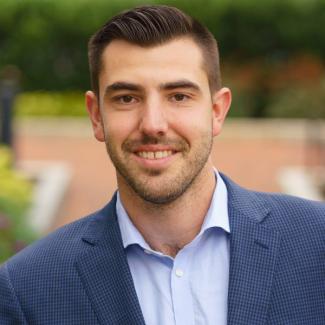Event
Organic Chemistry Seminar, Dr. Steven Lopez, Northeastern University
"Understanding the reactivities of photochemical pericyclic reactions towards strained organic molecules with multireference photodynamics simulations"

Abstract
-Photochemical reactions are increasingly important for the construction of value-added, strained organic architectures. Direct excitation and photoredox reactions typically require mild conditions and permit access highly strained molecules and new synthetic methodologies. The a priori design of photochemical reactions is challenging because degenerate excited states often result in competing reaction mechanisms to undesired products. Further, a lack of experimental techniques that provide atomistic structural information on ultrafast timescales (10–15 – 10–12 s) limits general ‘chemical intuition’ about these processes. Computations, however, provide a path forward. I will discuss how my group has leveraged complete active space self consistent field (CASSCF) calculations, non-adiabatic molecular dynamics, and machine learning (ML) techniques to understand the reactivities and selectivities of a photochemical pericyclic reactions, including a light-driven cascade reaction towards the first stable polyacetylene, fluoropolyacetylene. I will introduce our new open-access machine learning tool, Python Rapid Artificial Intelligence Ab Initio Molecular Dynamics (PyRAI2MD), which enables 100,000-fold longer simulations than are currently possible with multiconfigurational NAMD simulations. PyRAI2MD has enabled the first nanosecond ML-NAMD simulations on stereoselective electrocyclic reactions with record degrees of freedom and molecular complexities. Future directions involving the simulation of photochemical reactions in complex solvated and crystalline environments will be presented.
Research
The Lopez group uses quantum mechanical and machine learning techniques to identify next-generation organic materials for applications in renewable energy and photomedicine. Organic materials are of great interest because they are highly abundant, low cost, and flexible. Our computational approach is combined with the experimental expertise of our collaborators, which establishes a powerful experiment-theory feedback loop that accelerates discoveries.
We are interested in improving the sustainability of modern transition-metal-catalyzed organic reactions by invoking photocatalysis and mild reaction conditions. As such, the reaction mechanisms of key organic reactions (i.e. C–H activation reactions, strained ring opening, and rearrangement reactions) are the focus of this fundamental research with high-impact applications described below:
Photodynamic Therapy (PDT) is a minimally disruptive cancer treatment. However, few drugs are currently approved for this purpose. We perform high-throughput virtual screening of candidates and use the results to rationally design potential drugs with visible and near-IR light absorption. Target compounds are then subjected to more complex calculations to evaluate their excited state properties and predict new reactivity modes.
Our group uses quantum mechanical calculations and molecular dynamics simulations to describe the relative crystallinity of organic semiconducting materials, which is known to substantially affect fundamental electronic processes in organic solar cells. We extend these calculations to provide atomistic descriptions of buried, donor-acceptor interfaces. Chemical intuition is used to fine-tune molecular interactions to ultimately control local interfacial disorder for highly effective, low-cost organic solar cells.
https://web.northeastern.edu/lopezlab/
Host. Prof. Dirk Trauner
